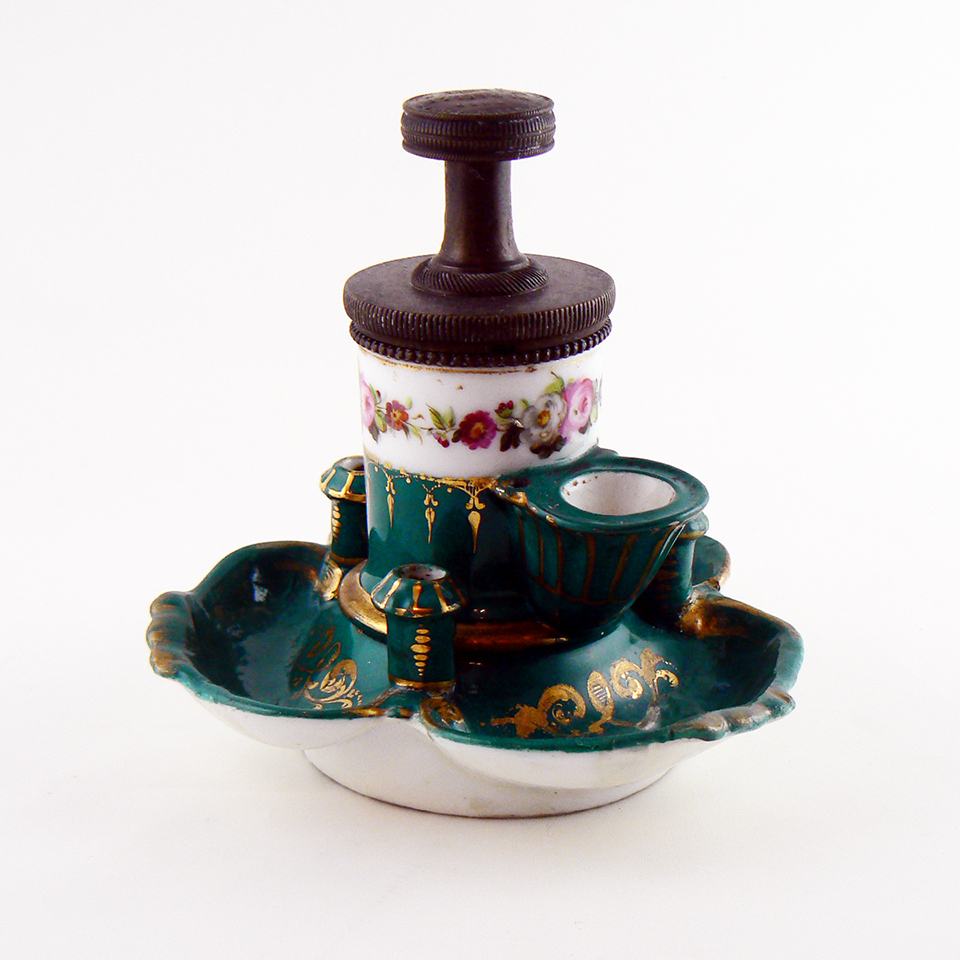
Among the multiple inkwells on Henry W. Longfellow’s study desk is the one pictured above. Made of green and white porcelain with floral and gilt decoration, the inkwell features an ingenious adjustable ceramic block that when lowered into the ink reservoir via the brass screw-top mechanism, raises the level of ink in the dipping portion. It also has three small receptacles meant to act as pen or quill holders.
On top of the screw mechanism in embossed letters can be read “1839 MEDAILLE D'ARGENT PARIS" and "ENCRIER POMPE BOQUET BREVETE", translating into English as “1839 Silver Medal Paris” and “Inkwell Pump Boquet Patent”. Designed by Louis-Honoré Boquet, this type of inkwell won an award at an 1839 exhibition in Paris. Boquet, awarded a patent for mechanical inkwells by the French government as early as 1831, presumably improved on his earlier models with this 1839 design. Prior to his work on inkwells, Boquet was known as an engraver and craftsman active in the late 18th-century, and he played a role in creating pieces for King Louis XVIII.
According to Longfellow’s brother and biographer Samuel Longfellow, this inkwell was the poet’s favorite, and the only one on his desk that he actually used, the others being gifts from a friend. Samuel Longfellow wrote of Henry’s inkwell “His own was of French china, with a screw-top for raising or lowering the ink.” The inkwell is visible in several photographs taken of the study table in the 1870s, during Henry’s lifetime.
